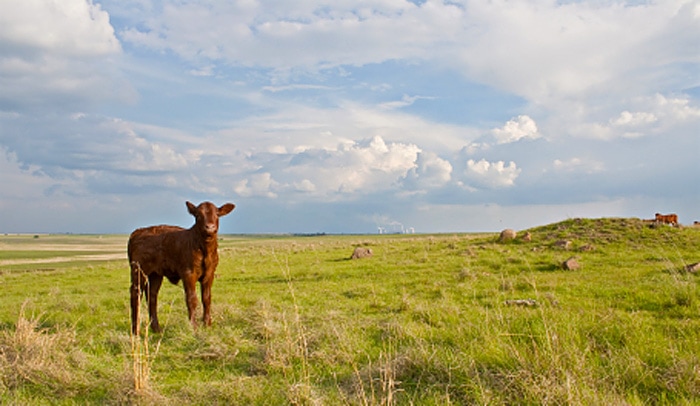
Written By: Gloria Tsang, RD
Title: Founding Registered Dietitian
Alumni: University of British Columbia
Last Updated on:

The Environmental Working Group, a consumer group that focuses on public health and the environment, has just released a “Meat Eater’s Guide” that contains some surprising environmental points to consider when choosing which meat and dairy products to eat.

Most surprising is that Americans’ yearly meat and cheese consumption contributes as much pollution to the environment as 46 million cars. If you’re picturing big trucks hauling meat to the grocery store as the source of much of that pollution, think again: Transportation accounts for only 10% of meat’s carbon footprint. So where does the rest of the pollution come from? Some pretty shocking sources. Here’s what the guide’s researchers found.
Table of Contents
Reading these statistics, you could start to think that maybe it would be best to avoid meat altogether – but even the guide’s writers don’t suggest going that far. That’s because meat is certainly part of a healthy diet. It’s an excellent source of protein and contains many other important nutrients, including the B vitamins, which are difficult to get from other sources. The good news is that not all animal products are equal when it comes to climate impact. Here’s how some of the most common animal food products’ greenhouse gas emissions stack up based on the equivalent number of car miles driven per 4 oz. consumed:
So, to make the biggest environmental impact in your diet, you can start by cutting back on items that pollute the most, like lamb and beef, and incorporating other options, like pork and chicken, into your meals. Here are the Environmental Working Group’s best suggestions for enjoying meat while minimizing your diet’s impact on the environment.
I’m certainly not going to tell you to stop eating meat! I firmly believe that meat is part of a healthy diet. By following the three tips above (especially waste less, the easiest of the three), you can reduce the environmental impact of your meat consumption without depriving yourself or your family of foods you enjoy.
What do you think of this report? Will you change the way you eat, after reading this report? Leave us a comment below!
Alumni: University of British Columbia – Gloria Tsang is the author of 6 books and the founder of HealthCastle.com, the largest online nutrition network run by registered dietitians. Her work has appeared in major national publications, and she is a regularly featured nutrition expert for media outlets across the country. The Huffington Post named her one of its Top 20 Nutrition Experts on Twitter. Gloria’s articles have appeared on various media such as Reuters, NBC & ABC affiliates, The Chicago Sun-Times, Reader’s Digest Canada, iVillage and USA Today.